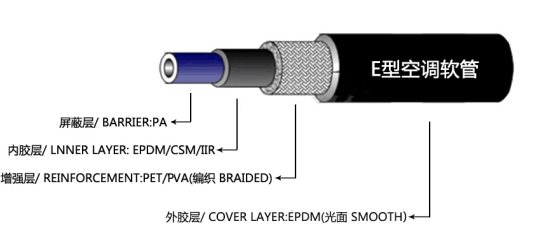brake booster line
Understanding Brake Booster Lines Key Components for Vehicle Safety
In the world of automotive engineering, the brake system is one of the most critical components for ensuring vehicle safety. Among the various elements that contribute to the efficacy of this system is the brake booster line. Understanding the function, importance, and maintenance of the brake booster line is essential for safe driving and optimal vehicle performance.
What is a Brake Booster Line?
The brake booster line is a crucial part of the braking system that connects the brake booster to the engine's intake manifold. The brake booster itself is designed to amplify the force applied to the brake pedal, making it easier for the driver to stop the vehicle. The brake booster line facilitates the flow of vacuum pressure from the engine to the brake booster, which in turn increases the braking efficiency without requiring excessive force from the driver's foot.
The Role of Vacuum in Brake Functioning
The operation of the brake booster line relies heavily on the principle of vacuum. When the engine is running, it creates a vacuum in the intake manifold. This vacuum is what powers the brake booster. When the driver presses the brake pedal, the vacuum is utilized to create additional force, allowing the driver to apply the brakes more effectively. This system is particularly beneficial in larger vehicles, where the sheer weight can make braking more labor-intensive.
Importance of the Brake Booster Line
The brake booster line plays a vital role in the overall functionality of a vehicle's brake system. A malfunction or leak in the brake booster line can lead to increased stopping distances and greater effort required to brake, potentially creating dangerous situations on the road. Consequently, ensuring that the brake booster line is in good condition is as crucial as maintaining other components of the braking system.
Signs of Brake Booster Line Issues
brake booster line

Drivers should be aware of the signs indicating that there may be a problem with the brake booster line. Common indicators include
1. Hard Brake Pedal If the brake pedal feels stiff and unresponsive, it could indicate a failure of the brake booster or a leak in the booster line. 2. Hissing Noise A hissing sound when the brakes are applied can signal air being sucked into the system, suggesting a leak in the booster line.
3. Brake Warning Light Modern vehicles are equipped with warning systems that can alert drivers to braking issues, including problems stemming from the brake booster line.
Maintenance and Repair
Regular maintenance is key to ensuring that the brake booster line remains in optimal condition. This includes periodic inspections during routine vehicle servicing. Mechanics typically check for signs of wear, cracks, or leaks in the brake booster line. If any issues are identified, prompt repair or replacement is necessary to ensure safety and efficiency.
Drivers can also play a role in maintenance by staying attuned to how their vehicle feels while braking. If any anomalies arise, it's crucial to have the vehicle inspected immediately.
Conclusion
In summary, the brake booster line is an integral part of a vehicle's braking system, significantly enhancing the safety and driving experience. Understanding its importance and recognizing the signs of potential issues can help prolong the life of the braking system and ensure more precise vehicle control. For drivers, knowledge of the brake booster line is not just about vehicle performance; it's ultimately about the safety of everyone on the road.
-
Ultimate Spiral Protection for Hoses & CablesNewsJun.26,2025
-
The Ultimate Quick-Connect Solutions for Every NeedNewsJun.26,2025
-
SAE J1401 Brake Hose: Reliable Choice for Safe BrakingNewsJun.26,2025
-
Reliable J2064 A/C Hoses for Real-World Cooling NeedsNewsJun.26,2025
-
Heavy-Duty Sewer Jetting Hoses Built to LastNewsJun.26,2025
-
Fix Power Steering Tube Leaks Fast – Durable & Affordable SolutionNewsJun.26,2025

